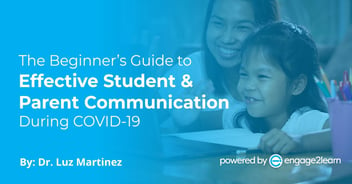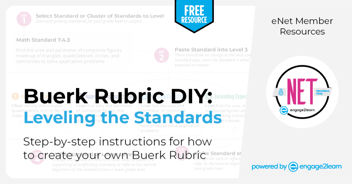Hey! Where is your Technology Plan? | engage2learn
You did it! You successfully advocated for the addition of new technology tools for your school district. But now what? Now, you may find yourself left with more questions than when you began. For instance, will students and teachers use these devices in a meaningful way? How will we maintain the devices? What if our technology infrastructure doesn’t have the capacity to support all of the new devices? What have we gotten ourselves into as it relates to the new tools?
Believe it or not, there is something that can help you answer all of these questions and more: a technology plan! By designing a long-range technology plan, you’re not only addressing the here and now, but you’re preparing for how current and future technologies will impact student learning in your district. Sound intimidating? It’s not! By following the suggestions below, you’ll be ready to roll out those new devices in no time.
By designing a long-range technology plan, you’re not only addressing the here and now, but you’re preparing for how current and future technologies will impact student learning in your district. Click To TweetCommunity Vision for the Learning Environment
Students and teachers aren’t the only ones impacted by decisions districts make when it comes to the integration of technology. Business owners and community libraries who offer free Wi-Fi may see a sudden influx of students asking to use their services. Parents will wonder what sites their students will have access to and how they can manage Internet access at home. It’s vital not only to communicate but to collaborate with community members about your district’s goals for learning with technology.
Technology Assessment
In order to make informed decisions about the development of technology initiatives, it’s imperative that your district conducts an assessment of the current state of technology. Assessing where you are now, helps to plan for where you want to be. Infrastructure, personnel, the state of existing technology items, budget and current inventory practices will all play a part in how new technology is managed and used in the future.
Design for Action
Based on the vision you crafted with community members, you may now define the district’s ideal future related to technology and the learning environment. But, what actions do you need to take in order to realize the ideal future? After generating action ideas, the district team creates results timelines and recommendations for year one, year two, and beyond. It’s then time to put the plans into action by designing a community accountability system that aligns to the Strategic Design, which serves as an effective evaluation and communication tool.
Putting It All Together
What are the hopes for your students? What steps do you need to take to make those hopes a reality? How will you know you’re on the right track? When your district works together with internal and external stakeholders, you can design a plan that not only defines goals but includes actionable steps and evaluative tools to answer these questions and keep you headed in the right direction.
What are the hopes for your students? What steps do you need to take to make those hopes a reality? How will you know you’re on the right track? Click To Tweet


